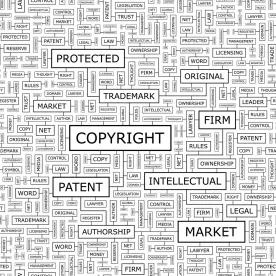False claims of use and fake specimens of use have bedeviled the US Patent and Trademark Office (USPTO) and legitimate trademark owners for many years. The Trademark Modernization Act of 2020 (“TMA”) — part of the COVID-19 relief legislative package signed by President Trump on December 27, 2020 — provides significant relief for trademark owners’ efforts to combat that fraud. As noted in a separate post, that omnibus legislative package provides relief to copyright owners by establishing a small claims tribunal system for copyright infringements. On the trademark front, the legislation makes it easier for trademark registrants to obtain injunctive relief and provides new mechanisms for challenging trademark applications and registrations on non-use grounds. These new procedures are intended to provide additional ways to combat fraudulent trademark applications and registrations.
The text of the TMA (H.R. 6196) is available here and the key provisions are discussed below.
Restoring Presumption of Irreparable Harm
The TMA restores the presumption that a trademark owner suffers irreparable harm when the trademark is infringed — which is a requirement for preliminary injunctions and other injunctive relief. Following the Supreme Court‘s ruling in a 2006 patent case, eBay v MercExchange, a split among the appellate courts developed, with many courts ruling that the presumption of irreparable harm was no longer valid. The TMA resolves the issue by amending Section 34 of the Lanham Act (15 U.S.C. 1116) to add a rebuttable presumption of irreparable harm upon a finding of infringement, or of likely success on the merits in a preliminary injunction context. The TMA thus restores an important protection for trademark owners seeking injunctions to halt infringements.
Protesting Applications
The TMA also codifies the PTO’s protest procedure by providing that third parties may file evidence during review of a pending trademark application, before it is published for opposition. This will give trademark owners an opportunity to educate Trademark Examiners about why a pending trademark application conflicts with prior rights, in an informal and non-contentious way. As a collateral effect of this amendment, trademark watching services will be even more valuable, as they provide trademark owners with notice of new, potentially conflicting trademark applications. The TMA directs the USPTO Director to establish procedures for this protest mechanism within a year.
New Ways to Challenge Registrations Due to Non-Use in US Commerce
A major difference between the trademark registration systems in the US and most other countries is that, with a few exceptions, use of a mark in US Commerce is required prior to US trademark registration. A sworn statement of use, with a specific date of first use and a specimen showing use of the mark on the goods or for the services, must be submitted to the USPTO before a trademark registration will issue. False assertions of use and fake specimens of use have caused significant problems and frustrations for the USPTO and legitimate trademark owners. The Expungement and Reexamination Procedures created by the TMA are designed to alleviate some of those problems.
Expungement and Reexamination Procedures
The TMA amends the Lanham Act by adding new Sections 16A and 16B (15 U.S.C. 1066A and B), to provide for two new ways for trademark owners to challenge existing trademark registrations on the ground of non-use. Under new Section 16A, a third party can file a petition for an expungement of a trademark registration on the ground that the trademark was never used in US commerce as required. A petition for expungement must be brought within 3 years of the registration’s issuance.
Under new Section 16B, a third party can file a petition for reexamination of a registration on the ground that the mark was not used in US commerce prior to the registration date, as required. A reexamination petition must be filed within 5 years of the registration’s issuance.
In a petition for either expungement or reexamination, the challenger must assert that a reasonable investigation was undertaken and that the evidence submitted shows that the mark had not been used as required under US law. The USPTO Director will make a decision on whether the ex parte proceeding should be instituted. If a proceeding is instituted, the registrant will be required to submit evidence demonstrating use of the mark on the subject goods or services, or that non-use was excusable under the law (for example, due to the Madrid Protocol or other treaty, or due to temporary extenuating situations).
Cancellation for Non-Use
The TMA also amends Section 14 of the Lanham Act (15 U.S.C. 1064) to add non-use as a cancellation ground: After 3 years of the issuance date, a registration will subject to cancellation on the ground that the mark has never been used in US commerce for the subject goods or services. That is another method for catching false assertions of use in applications or statements of use. While the level of proof may be difficult (“has never been used in US commerce”), it is a significant step as prior non-use cases often turned on whether there had been intentional fraud on the USPTO – which is a very high standard of proof.
By providing for new ex parte expungement and reexamination procedures, the TMA provides a new way for trademark owners to alert the USPTO to fraudulent registrations and to level the playing field. It is welcome acknowledgement of the problems caused by the plethora of trademark applications and registrations with false assertions of use in the US.




 />i
/>i
